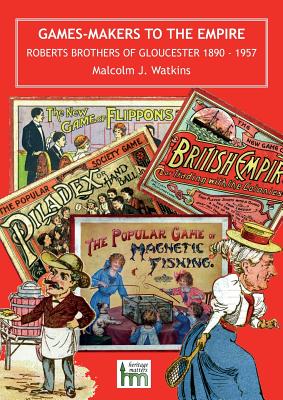
Games Makers to the Empire
Description
A record of the revealed story and many of the products made by the Gloucester (England) company that brought entertainment to millions across the world during more than six decades. Malcolm J Watkins, former Strategic Cultural Manager for Gloucester City Council, has spent more than a decade studying and researching the company of Roberts Brothers of Gloucester, England. The company was at one period considered to be the largest maker of pastimes and games in the United Kingdom, yet its memory has faded from most people's awareness. The firm, founded by the brothers Harry Owen Roberts and John Owen Roberts, developed from a simple (some would say silly) party game devised by one or both brothers for a Sunday chool class. The game received a patent in 1890, and a publisher was found to market it, soon causing a craze for the game of Piladex. In 1894 the brothers decided to concentrate on the growing business as they added more and more games to their repertoire. The game was played by members of the royal family, and this in turn led to further success, with expansion leading to the brothers building a state-of-the art factory in the city. They adopted the trade name of Glevum, based on the Roman name for Gloucester, and soon began to use a stylised head of a Roman soldier as the trade mark. The company continued to grow, despite the First World War and the Depression. Agencies and offices were found across the world, and at the height of its success more than 750 were employed. World War II was to provide a halt to their growth. The factory was commandeered for war work, and all but a handful of staff went into the forces or other areas supporting the war effort. After the war the company's fortunes were slow to recover, and as a result of a number of factors the directors were forced to seek a friendly take-over by rivals Chad Valley, resulting in the effective end of the company in 1956 with the factory finally closing in 1957. This book examines the small amount of evidence for the company and its history that has survived, and provides the most complete assessment of the products yet published. Thousands of pictures in both black and white and colour illustrating the breadth of the imagination and products of the company are shown in a way that will prove of lasting value to many readers, whether historians or collectors.
